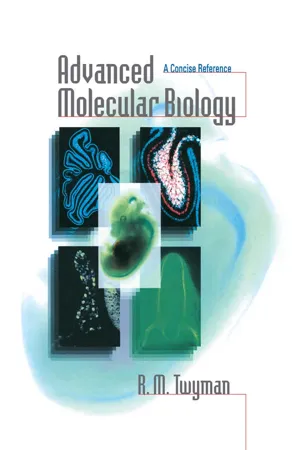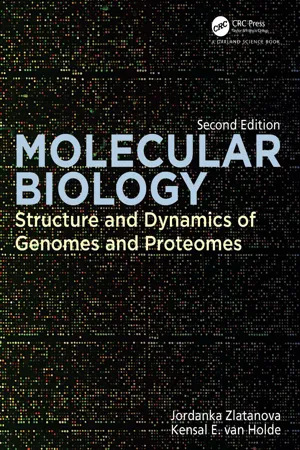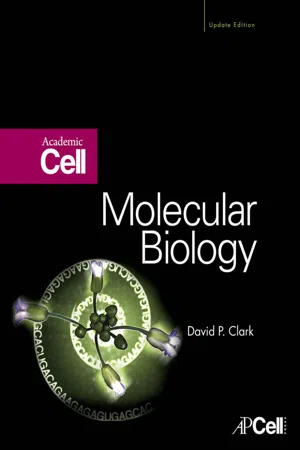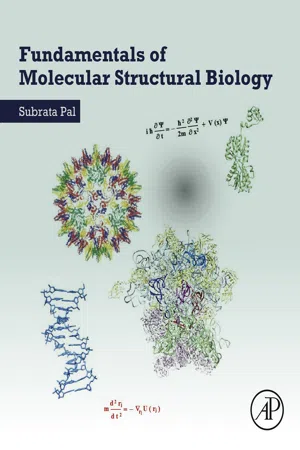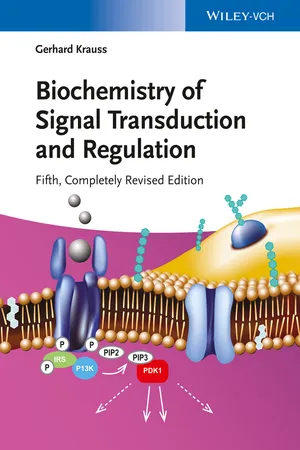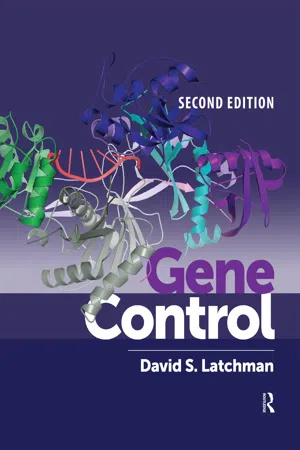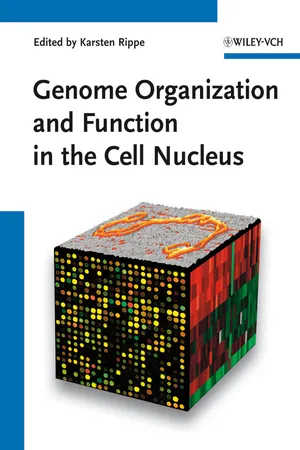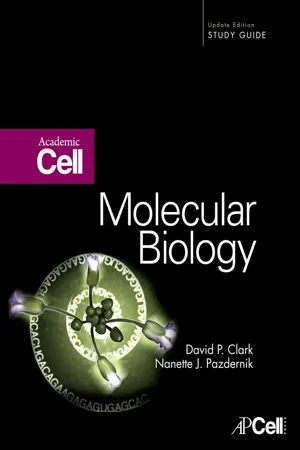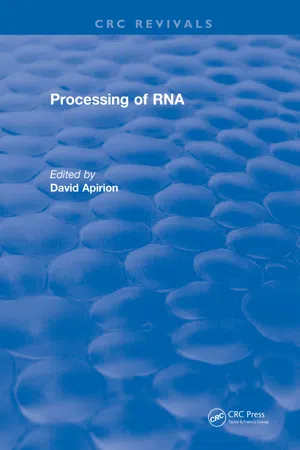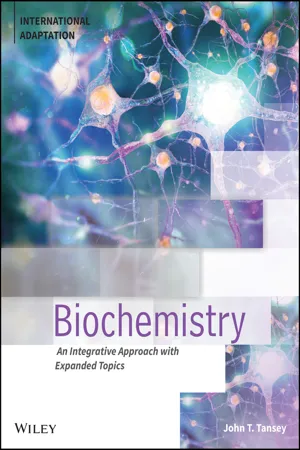Biological Sciences
RNA Processing
RNA processing refers to the modifications that newly transcribed RNA molecules undergo before becoming functional. This includes processes such as capping, splicing, and polyadenylation, which occur in the nucleus of eukaryotic cells. These modifications are essential for the stability, transport, and translation of the RNA, ultimately influencing gene expression and protein production.
Written by Perlego with AI-assistance
Related key terms
Related key terms
1 of 4
Related key terms
1 of 3
11 Key excerpts on "RNA Processing"
- eBook - ePub
Advanced Molecular Biology
A Concise Reference
- Richard Twyman(Author)
- 2018(Publication Date)
- Garland Science(Publisher)
Chapter 27RNA Processing
Fundamental concepts and definitions- RNA Processing describes the structural and chemical maturation of newly synthesized RNA molecules. The modifications occur during transcription (cotranscriptional modification) and afterwards (posttranscriptional modification); they may be essential for RNA function or may represent a mechanism of gene regulation. Such reactions fall into ten categories, as shown in Table 27.1 .
- An RNA molecule copied from a DNA template is a transcript. During transcription, it is a nascent transcript, and when transcription is complete it is a primary transcript — an exact copy of the DNA from which it was transcribed. After any modification, the product is a mature transcript and may no longer be an exact copy of the DNA.
- Not all RNA is modified: bacterial mRNAs are rarely processed (indeed protein synthesis usually initiates before transcription is complete), and eukaryotic 5S rRNA is transcribed as a molecule with mature ends. The precursor of fully processed and functional RNA is termed pre-RNA. Eukaryotic pre-mRNA is also described as heterogeneous nuclear RNA (hnRNA) because, unlike the other forms of nuclear RNA, it has a great size diversity, reflecting varying gene sizes and the presence of partially processed molecules.
- In eukaryotes, transcription and RNA Processing do not occur ‘free’ in the nucleus, but are localized at discrete foci in the nuclear matrix. Certain mRNA Processing factors (specifically the spliceosome and polyadenylation enzymes) are attached to the C-terminal tail of RNA polymerase II in the elongation complex, so that transcription and processing are directly linked. The localization of mRNA Processing complexes in the nuclear matrix may facilitate export. RNA is associated with proteins in the nucleus and (if appropriate) the cytoplasm, to form ribonucleoprotein particles.
- eBook - ePub
Molecular Biology
Structure and Dynamics of Genomes and Proteomes
- Jordanka Zlatanova(Author)
- 2023(Publication Date)
- Garland Science(Publisher)
RNA ProcessingDOI: 10.1201/9781003132929-14Learning objectives Most RNA molecules must undergo post-transcriptional processing before they can function appropriately in the cell.In bacteria, messenger RNAs (mRNAs) can be directly translated without processing, but functional transfer RNAs (tRNAs) and ribosomal RNAs (rRNAs) are generated by cleavage and trimming of tandem transcripts. tRNA molecules also undergo a variety of base modifications.In eukaryotes, the pre-mRNAs synthesized in the nucleus must undergo a series of modifications before being exported to the cytoplasm. These include 5′-capping, 3′-polyadenylation, removal of introns and splicing of exons into an uninterrupted chain, and in some cases editing: insertion or deletion of nucleotide residues and/or chemical modification of bases. Capping is the addition of GMP at the 5′-end of a message, in a 5′–5′ orientation. The cap serves to protect the message from exonucleases by recruiting proteins, aids in transport to the cytoplasm, and functions as the site of ribosomal attachment during initiation of translation. The poly(A) tail that is added to the 3′-end of the message recruits proteins to protect this end from exonucleolytic attack.Removal of most introns and resplicing of exons require spliceosomes, huge complexes of several RNA molecules and many proteins. The spliceosomes recognize 3′- and 5′-splice sites, and an internal intron site, catalyze cleavage, and then religate adjacent exons. Some introns are self-splicing; they excise themselves from the RNA while ligating exons. The RNA in the self-splicing introns performs the catalysis; thus, it acts like a protein enzyme and is appropriately called a ribozyme. In many cases, splicing can take alternate routes, adding or excluding exons or using alternative or cryptic splice sites. As a result, one gene can often produce different protein products in different tissues or at different stages of development. Alternative splicing may even involve exons from distant genes. Alternative splicing is a highly regulated process, involving several factors, including splice-site strength, protein enhancers or silencers, RNA secondary structure, and chromatin structure. Finally, the processed mRNAs are exported to the cytoplasm through nuclear pores, via a ratcheted Brownian motion mechanism. If mRNA molecules are faulty or the cell no longer requires the protein product, the mRNAs are degraded, in either the nucleus or cytoplasm. - eBook - ePub
- David P. Clark(Author)
- 2009(Publication Date)
- Academic Cell(Publisher)
Chapter Twelve
Processing of RNA
RNA is Processed in Several Ways Coding and Non-Coding RNA Processing of Ribosomal and Transfer RNA Eukaryotic Messenger RNA Contains a Cap and Tail Capping is the First Step in Maturation of mRNA A Poly(A) Tail is Added to Eukaryotic mRNA Introns are Removed from RNA by Splicing Different Classes of Intron Show Different Splicing Mechanisms Alternative Splicing Produces Multiple Forms of RNA Inteins and Protein Splicing Base Modification of rRNA Requires Guide RNAs RNA Editing Involves Altering the Base Sequence Transport of RNA out of the Nucleus Degradation of mRNA Nonsense Mediated Decay of mRNARNA is Processed in Several Ways
RNA is made by RNA polymerase, using a DNA template, in the process known as transcription (see Ch. 6 ). Sometimes the RNA molecule is ready to function immediately after it has been transcribed (e.g. most bacterial mRNAs). However, in many cases, the RNA needs further processing before it is functional. In these cases, the original RNA molecule, before any further processing occurs, is known as the primary transcript . For specific classes of RNA, the precursor (i.e., primary transcript) may be referred to as pre-mRNA, pre-tRNA etc. The term, hnRNA (heterogeneous nuclear RNA) was also used previously, before the relationship of precursor RNA to the final processed RNA product was understood.Many RNA molecules are modified in a variety of ways after being synthesized.Three major types of processing, base modification, cleavage and splicing (Fig. 12.01 ) apply to all classes of RNA. In addition, eukaryotic mRNA undergoes capping and tailing as well as splicing. Like tRNA, which contains modified bases that are made after transcription (Chapter 8 ), rRNA, especially from higher organisms, contains modified bases. Certain RNA molecules are made as longer precursors that are trimmed to the correct length. In other, related cases, several RNA molecules are included in the same primary transcript, which is then cleaved into several parts. This applies to the rRNA molecules of both prokaryotes and eukaryotes. Splicing involves the removal of long segments from an RNA molecule by cleavage and rejoining of the ends. This is characteristic of eukaryotic mRNA due to the presence of non-coding introns in many eukaryotic genes (see Ch. 4 - eBook - ePub
- Subrata Pal(Author)
- 2019(Publication Date)
- Academic Press(Publisher)
Chapter 10RNA Processing
Abstract
In eukaryotic cells, before RNA polymerase II-generated transcripts could be translated into protein products, these transcripts (pre-mRNAs) need to be suitably processed to form messenger RNA (mRNA). Three major events constitute pre-mRNA Processing: (a) 5′-end capping, (b) splicing, and (c) 3′-end polyadenylation. In 5′-capping, the 5′-triphosphate of the nascent transcript is hydrolyzed to a diphosphate and a guanosine monophosphate is added in a reverse 5′-5′ orientation. Subsequently, the GpppN- cap is methylated to form m7 GpppN-. In splicing, the noncoding sequences (introns) that separate the coding sequences (exons) are removed and the exons are joined together. 3′-Polyadenylation involves cleavage of the transcript at a specific site and addition of a poly(A) tail. In addition, there is a fourth mechanism of RNA Processing, known as RNA editing, in which instead of stretches of the transcript, individual bases are inserted, deleted, or altered posttranscriptionally.Keywords
RNA Processing; Capping; Polyadenylation; Splicing; Spliceosome; RNA editingThe previous chapter has described how a gene is transcribed to produce RNA and the manner in which the process of transcription is regulated. We have also seen that, in eukaryotic cells, the protein-coding genes are transcribed by RNA polymerase II (RNAP II). However, before RNAP II-generated transcripts could be translated into protein products (a phenomenon to be described in the next chapter), these transcripts need to be suitably “formatted” or processed to acquire a form known as messenger RNA (mRNA). The primary transcription product of the protein-coding genes is called the precursor messenger RNA (pre-mRNA).Three major events constitute pre-mRNA Processing: (a) 5′-end capping, (b) splicing, and (c) 3′-end polyadenylation. In 5′-capping, the 5′-triphosphate of the nascent transcript is hydrolyzed to a diphosphate and a guanosine monophosphate is added in a reverse 5′–5′ orientation. Subsequently, the GpppN- cap is methylated to form m7 - Gerhard Krauss(Author)
- 2014(Publication Date)
- Wiley-VCH(Publisher)
5 RNA Processing, Translational Regulation, and RNA Interference5.1 Pre-mRNA Processing
Summary
The information encoded in the primary product of transcription, the pre-mRNA can, by alternative splicing, be used to generate multiple mRNAs from a single pre-mRNA. Alternative splicing vastly expands the repertoire of proteins in a cell, and the subtypes generated by the alternative splicing of a pre-mRNA may have quite different functional and regulatory properties. Splice site selection and splicing itself are intimately linked to transcription by RNA polymerase II and to processes upstream and downstream of transcription, including translation and mRNA decay. The features of alternative splicing important for splice-site selection have been only partially characterized. The structure of the primary transcript, the components of the spliceosome, chromatin structure and proteins involved in transcription elongation, have been all found to cooperate in splice site selection.Transcription and translation are spatially separated events in eukaryotes. The primary product of nuclear transcription is pre-mRNA, that is characterized by three structural features: (i) capping at the 5′-end; (ii) polyadenylation at the 3′-end; and (iii) the presence of introns interspersed between the coding regions of the pre-mRNA, the exons. The introns are removed in the process of splicing to yield the mature RNA that is transported out of the nucleus for translation. How much protein, and which protein is formed by translation, depend heavily on the identity and quantity of processed, mature RNA. Capping, polyadenylation and splicing are highly regulated and coordinated events that have been shown to be intimately linked to the transcribing RNA polymerase complex.- eBook - ePub
- David Latchman(Author)
- 2020(Publication Date)
- Garland Science(Publisher)
Post- transcriptional Processes 6Introducation
The transcription of DNA into RNA represents the first stage in the process of gene expression (Chapter 4 ) and is the major control point regulating which genes are expressed (Chapter 5 ). However, the process of transcription is supplemented by a series of post-transcriptional events that are necessary to produce a functional mRNA which is able to be translated into protein (Figure 6.1 ).FIGURE 6.1 Stages in eukaryotic gene expression which could be regulated.Even while transcription is still proceeding, the nascent RNA is capped at its 5′ end by a modified guanosine residue and is cleaved near its 3′ end, followed by addition of up to 200 adenosine residues in a process known as polyadenylation. In addition, intervening sequences or introns (which interrupt the protein-coding sequence in both the DNA and the primary transcript of many genes) are removed by a process of RNA splicing.These various post-transcriptional processes all occur in the nucleus and do not necessarily take place in the simple sequence illustrated in Figure 6.1 . For example, the removal of intervening sequences can occur either before or after polyadenylation has occurred. Moreover, all these processes are closely coupled with one another and with the process of transcription itself (see Section 6.4 ).Taken together, these post-transcriptional processes produce a functional mRNA, within the nucleus. This fully spliced RNA molecule must then be transported from the nucleus to the cytoplasm where it can be translated into protein.As each of these stages in gene expression is essential for the production of a functional mRNA, they could potentially be a target for control processes which regulate gene expression. Accordingly, post-transcriptional processes are described in this chapter and their role in regulating gene expression is discussed in Chapter 7 - Karsten Rippe, Karsten Rippe(Authors)
- 2012(Publication Date)
- Wiley-VCH(Publisher)
Chapter 11 Processing of mRNA and Quality Control Ute Schmidt and Edouard Bertrand 11.1 IntroductionThe production of messenger RNA (mRNA) is a key process in gene expression, and this involves many steps and a myriad of trans -acting factors. Each of these steps is not only subject to regulatory control, but can also lead to mis-processed mRNAs. When translated, these faulty mRNAs can produce toxic proteins. Moreover, even in the absence of translation, their accumulation can perturb cellular function and eventually lead to death. This is for instance the case of mRNAs containing extended repetition of certain triplets, which titrate key RNA Processing factors [1, 2]. To remove these potentially toxic mRNAs, cells have evolved a variety of quality control procedures that either directly destroy the potentially toxic mRNAs, or store them for some time until complete processing or degradation. This chapter first briefly reviews the main steps in mRNA biogenesis, with particular emphasis on splicing, as this not only creates genetic diversity but also plays a key role in mRNA fate and in many quality control pathways. The structure, assembly, and function of the exon junction complex is then reviewed, as this complex mediates many of the effects of splicing on downstream steps and is at the heart of the probably best understood quality control process. Finally, cytoplasmic and nuclear mRNA quality control steps are described, using mainly yeast and mammalian cells as models.11.2 Biosynthesis of Messenger RNA 11.2.1 Capping, 3′ End Formation and PolyadenylationRNA polymerase II generates all cellular mRNAs, but these molecules are first transcribed as precursors that must undergo a series of modifications before becoming functional (Chapter 10). All polymerase II transcripts are capped at their 5′ end and, with the exception of replication-dependent histones mRNAs, contain a polyA tail at their 3′ end. Pre-mRNA capping occurs co-transcriptionally, and in agreement, the enzymes involved are directly associated to the S5-phosphorylated C-terminal domain of initiating RNA polymerase II [3–5]. Indeed, as soon as the newly synthesized pre-mRNA exits the polymerase, a guanosine is added in an unusual 5′-5′ conformation at the mRNA 5′ end [6, 7]. Capping of the nascent RNA first requires removal of the γ-phosphate from the 5′ end of the RNA and addition of a guanosine by the enzyme guanylyltransferase. Subsequently, the cap is subjected to methylation at position 7 of the terminal guanosine, producing the structure m7G(5′)ppp(5′)Pu that is commonly referred to as m7-G cap. The cap not only protects the unstable 5′ end from exonucleolytic degradation [8], but it further promotes splicing [9], 3′ end processing, nuclear export [10], translation initiation, and nonsense-mediated decay [11]. These effects are mediated by the factors that bind the m7-G cap. In the nucleus, the cap is recognized by the cap binding complex (CBC), formed by the proteins CBP20 and CBP80 [12, 13]. The CBC is exported with the mRNA to the cytoplasm, where it supports the first round of translation, also referred to as the pioneering round of translation. The CBC is then replaced by the cytoplasmic cap binding protein, which is the translation initiation factor eIF4E. This factor promotes translation by helping recruitment of the small ribosomal subunit [14].- eBook - ePub
Molecular Biology
Academic Cell Update Edition
- David P. Clark(Author)
- 2012(Publication Date)
- Academic Cell(Publisher)
12 Processing of RNASummary
Before a protein can be translated, the mRNA needs to be modified and processed in many ways. In bacteria, there is some processing, but in eukaryotes, the primary transcript undergoes many modifications before translation. Three different modifications occur in all species, base modification, cleavage, and splicing which removes intervening sequences that do not have any protein coding information. Some intervening sequences or introns are self-splicing, therefore, that particular RNA is labeled a ribo-zyme. In eukaryotes, the primary transcript must also be capped at the 5′ end and a poly-adenine (poly(A)) tail added to the 3′ end to make the transcript competent for export out of the nucleus.The numbers and types of RNA vary greatly in prokaryotes and eukaryotes. Many bacteria have non-coding RNA that includes tRNA, rRNA, and other transcripts in addition to the traditional mRNAs. In eukaryotes, a combination of coding and non-coding RNAs also creates the proteins and cellular components needed to function. The non-coding RNAs include tRNA, rRNA, and a variety of small nuclear RNA (snRNA), small nucleolar RNA (snoRNA), and small cytoplasmic RNA (scRNA). The small transcripts in the nucleus (snRNA and snoRNA) are called U-RNA also because they are rich in uridine. Even these small transcripts undergo modifications and processing.Ribosomal RNA and transfer RNA are processed from a primary transcript into a mature transcript even though they are not translated into a protein. Ribosomal RNA starts as one transcript in prokaryotes, and must be cut by ribonucleases P to form three, 16S rRNA, 23S rRNA, and 5S rRNA. In eukaryotes, the 18S rRNA, 28S rRNA, and 5.8S rRNA start as one transcript that is processed like in bacteria. Transfer RNA also begins as longer precursor molecules that are cleaved by ribonuclease P. Interestingly, ribonuclease P is a complex of RNA and protein, but since it is the RNA component that catalyzes ribosomal RNA cleavage, this is considered a ribozyme. In addition to cleavage of primary transcripts, non-coding RNAs are subjected to base modifications and editing. Transfer RNA and rRNA have modified bases. The snoRNA from the nucleolus is a type of guide RNA that locates the correct nucleotide for processing. Each snoRNA recognizes a specific site for modification, and then directs the enzyme to the site for modification. Some nucleotides are modified by methylation of the 2’OH group or converting uridine to pseudouridine. Many eukaryotes have the coding region for snoRNAs within introns of other genes. - eBook - ePub
- David Apirion(Author)
- 2017(Publication Date)
- CRC Press(Publisher)
V. Epilogue
Within the last five years considerable advances have been made in describing the steps of RNA Processing in yeast. It is clear, however, that much remains to be learned. The enzymology of processing of yeast RNAs (and, for that matter, all eukaryotic RNAs) is in a very early stage as only the nucleotidyltransferase,172 RNase P-like, and tRNA splicing activities are well characterized. Additionally, while there are several interesting yeast mutants which are defective in a variety of steps of tRNA, rRNA, and mRNA precursor processing which have proved most useful for identifying RNA precursors and purifying processing enzymes, the molecular nature of the defects in these mutants has not been elucidated. Finally the synthesis of mature RNAs requires well-controlled cytoplasmic and nuclear interactions since all the processing steps take place in the nucleus but all of the processing enzymes and ribonucleoproteins are first synthesized in the cytoplasm. Available data indicate that compartmentalization of precursor RNAs and processing enzymes to the nucleus and mature RNAs to the cytoplasm is efficient. However, the mechanism(s) for shuttling of proteins and RNA molecules across compartmental barriers remains obscure. One hopes that mutants will again be useful to unravel this fascinating and important area of molecular biology.Acknowledgments
I thank E. DeRobertis, C. Greer, B. D. Hall, C. Peebles, M. Rosbash, D. Standring, D. Soli, P. Tekamp, and A. Weil for providing unpublished data, and G. Fabian, D. Hurt, S. Johnston, J. Hopper, and C. Peebles for comments on drafts of this review.References
1 . Hinnen, A., Hicks, J. B., and Fink, G. R., Transformation of yeast, Proc. Natl. Acad. Sei. U.S.A. , 75, 1929, 1978.2 . Abelson, J., RNA Processing and the intervening sequence problem, Annu. Rev. Biochem. , 48, 1035, 1979.3 . Guthrie, C. and Abelson, J., Organization and expression of tRNA genes in S. cerevisiae , in The Molecular Biology of the Yeast Saccharomyces - Thomas Russell(Author)
- 2012(Publication Date)
- Academic Press(Publisher)
STEPS IN PROCESSING OF mRNA: IMPLICATIONS FOR GENE REGULATION
J.E. Darnell, Jr., The Rockefeller University, New York, New YorkPublisher Summary
This chapter examines implications of the steps in processing of mRNA for gene regulation. In bacterial cells, transcription and translation are physically intimately associated and perhaps even physiologically coupled. Evidence of the interaction between the translation and transcriptional apparatus comes from the studies of attenuation, a phenomenon where premature termination occurs in the transcription of certain operons. In eukaryotic cells, protein synthesis is structurally separated from the nuclear site of mRNA formation. The mRNA in eukaryotes is derived from primary nuclear RNA transcripts only after an elaborate set of modifications. In vertebrate cells and some insect cells, there are not only chemical modifications at both ends of the final mRNA product prior to its engagement with ribosomes in the cytoplasm but cleavage of the primary transcript and reunion of selected polynucleotide stretches—RNA:RNA splicing—is necessary to generate a functional mRNA. This chapter discusses initiation and termination in transcription units for mRNA and molarity of late transcription of Ad-2 genome. It also presents a summary of mRNA biosynthesis based on work with Ad-2 transcription units and Chinese hamster cells.INTRODUCTION
The Problem of the Levels of Gene Regulation in Eukaryotic CellsOne point of view has colored the work in our laboratory over the past fifteen years. It has to us seemed necessary that a detailed understanding of the steps in mRNA formation in eukaryotic cells (mammalian cells, in fact) must precede any logical attempt to understand the level of regulation of eukaryotic gene expression (1 , 2 ). This view may have seemed parochial, or trivial, or unnecessary in turn in the face of the brilliant demonstrations of the universality of the genetic code, especially including initiation and termination codons; the broad similarity in all cells of protein factors for initiation, elongation and termination during polypeptide assembly (3 ); the presence of RNA polymerases of high molecular weight and complicated structure that share many generally similar properties in all cells (4 , 5 ); and even the possible similarity between histone and non-histone chromosomal proteins to the recently discovered generalized double-stranded DNA binding proteins that join the already known bacterial regulatory proteins that bind to DNA (5 , 6- eBook - ePub
Biochemistry
An Integrative Approach with Expanded Topics
- John T. Tansey(Author)
- 2022(Publication Date)
- Wiley(Publisher)
Conversely, eukaryotic organisms modify their RNA molecules, often while they are being transcribed. Modifications to mRNA include capping, polyadenylation, and splicing; modifications to tRNA and rRNA generally involve other types of chemical modification of bases (Figure 15.7). FIGURE 15.7 Messenger RNA Processing in eukaryotes. Messenger RNAs undergo the addition of a 7-methylguanine cap to the 5′ end of the message, addition of a poly(A) tail to the 3′ end, and splicing to remove introns prior to export from the nucleus. (Source: Wessner, Microbiology, 2e, copyright 2017, John Wiley & Sons. This material is reproduced with permission of John Wiley & Sons, Inc.) Given that prokaryotes do not modify RNA in any significant way, why have these processes evolved in eukaryotes? The function of some modifications is unclear, but capping is known to assist in the export of RNA from the nucleus and polyadenylation to increase the stability of RNA. This section discusses the different modifications made to RNA and their effects. 15.2.1 Messenger RNA molecules receive a 5′-methylguanine cap Messenger RNA molecules are modified before transcription has been completed. Following synthesis of the first 25 to 30 nucleotides of the nascent mRNA, a 5 ′ -methylguanine cap is added in three separate steps (Figure 15.8). First, RNA triphosphatase removes the γ-phosphate from the 5′ nucleotide. Next, guanylyltransferase transesterifies a molecule of GMP to the terminal phosphate, leaving a structure with the sequence GpppN, in which N is the first nucleotide of the message. The donor molecule in this step is GTP, and pyrophosphate is lost and degraded in the course of the reaction. In mammals, these first two steps are catalyzed by a multifunctional enzyme complex. Finally, the cap is methylated on the 7 position of the ring by guanine-7-methyltransferase
Index pages curate the most relevant extracts from our library of academic textbooks. They’ve been created using an in-house natural language model (NLM), each adding context and meaning to key research topics.
Explore more topic indexes
Explore more topic indexes
1 of 6
Explore more topic indexes
1 of 4
